Planting and caring for gooseberries in the open ground in spring
Gooseberries, like other fruit and berry crops, are planted in spring and autumn. Each of these methods has its own advantages and disadvantages. To choose the right one and get a rich harvest in the future, you need to take into account some nuances. We will tell you in detail about planting and caring for gooseberries in the open ground in the spring.
When is it better to plant gooseberries - in spring or autumn?
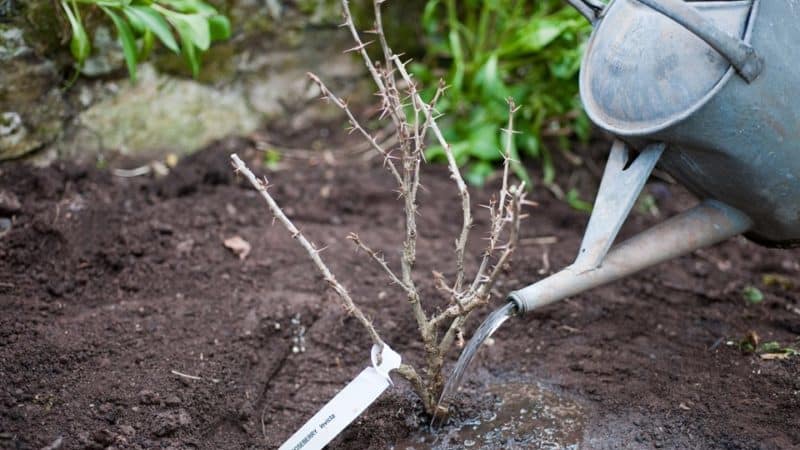
In theory, spring and fall planting have equal benefits. Many people plant shrubs in the fall - it is believed that an overwintered plant wakes up earlier in the spring and actively begins to grow. If you don't take into account the region, that's how it is.
However, experienced summer residents advise focusing on the extremes that characterize the weather in areas with a harsh or unpredictable climate. For example, seedlings that take root in the fall may be caught by the first premature frost and will not survive the winter. Similarly, already rooted planting material may die if the winter has little snow. In such conditions, spring planting is preferable.
The timing of planting gooseberries in the spring also shifts slightly depending on the region:
- in the southern regions of Russia - in March or early April;
- in the middle zone and Moscow region - no earlier than April;
- in the Urals and Siberia - at the end of April or beginning of May, when the return frosts have passed.
Many gardeners plan planting times based on the phase of the moon. According to the lunar calendar, favorable days in the spring of 2020:
- in March – from 26 to 29;
- in April - from 11 to 15, 24, 25;
- in May – from 2 to 10.
The days of the new moon and full moon are considered unfavorable, as well as:
- in March – 9, from 19 to 21, 24;
- in April – 8, from 15 to 17, 23;
- in May – 7, 13, 14, 22;
- in June – 5, from 9 to 11, 21.
Planting and care in spring in open ground
Proper planting is the key to ensuring that the plant develops well and gains immunity to diseases and insect pests.
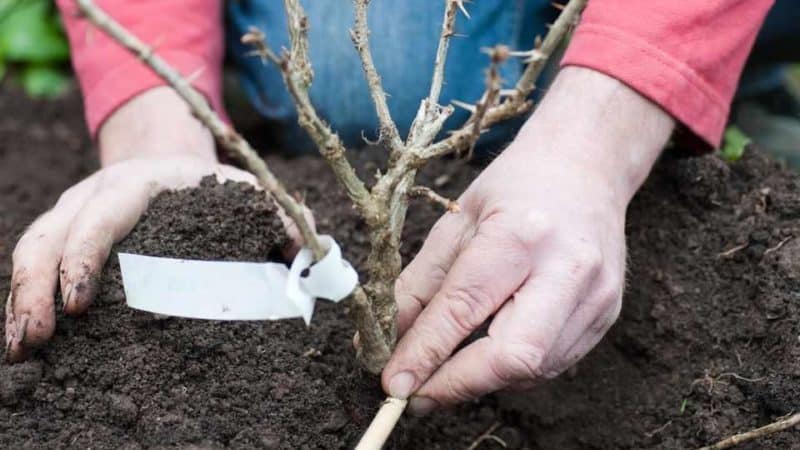
Preparing seedlings and soil
Spring planting begins with the preparation of seedlings and location. What are the criteria for choosing planting material:
- Seedlings with a closed root system can be either annual or biennial. If the roots are bare, it is better to take a stronger and older plant - 2 years old.
- Condition of two-year-old seedlings: at least 2-3 shoots 20-30 cm long and several strong roots 20-25 cm long.
- Condition of seedlings with a closed root system: several shoots 30-50 cm long with leaves. The plant stands firmly in the container, and the earthen lump does not crumble.
- Both the roots and the above-ground part must have a healthy appearance, be free of mechanical damage and signs of damage diseases or pests.
Before planting, the root system of the seedling is dipped in clay mash (clay diluted with water to the consistency of liquid sour cream) or a root formation stimulator solution (Kornevin, Heteroauxin). Then the seedling will take root easier and faster.
Gooseberries need, first of all, a bright place - they love the sun very much. Light partial shade will not affect further development and fruiting, but this crop will not grow in the shade. Planting in lowlands, swampy areas and where groundwater is higher than 1.5 m is also unacceptable. If the entire site in this sense leaves much to be desired, a mound is made for the gooseberries and planted on a hill.This will save the bush from getting wet and rotting roots.
The soil needs to be fertile, light and loose, preferably loam or sandstone. Acidity level is neutral (pH 6-7). Gooseberries grow poorly even on slightly acidic soil, so if necessary, add dolomite flour, chalk, lime or wood ash.
Reference. Clay soil is loosened with sand so that water does not stagnate and the roots do not rot. Humus is added to sandy soil - moisture quickly evaporates from soil that is too dry. It is important to make the best option for gooseberries in accordance with these features.
Landing algorithm
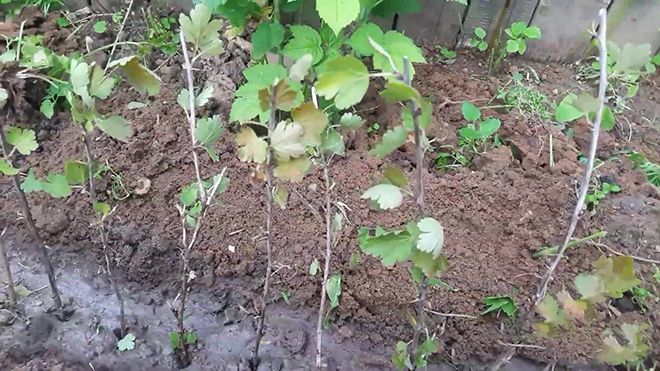
Gooseberry bushes are planted on the site according to the following scheme:
- the distance between bushes of low-growing varieties is 1.2 m, medium-growing varieties are 1.5 m, tall and spreading varieties are 1.8-2 m;
- row spacing – 2-2.5 m;
- distance from the fence – 1-1.5 m.
The gooseberry is growing a lot. Thickened plantings are difficult to care for and very problematic to harvest. If the bushes shade each other, this will affect the taste of the berries.
Take into account the location of other crops. Positive, negative and neutral neighborhoods for gooseberries are listed in the table.
| Neighbours | Cultures | Recommendations |
|---|---|---|
| Good |
|
Different varieties of gooseberries serve as pollinators for each other. Cherry, honeysuckle and red currant require care similar to gooseberries, so it is convenient to plant them nearby. Spicy herbs repel insect pests. |
| Bad |
|
Crops are susceptible to attack by the same pests and infection by the same diseases. It's not hard to imagine the scale of the problem if this happens. |
| Neutral |
|
The root system of fruit trees is deeper than that of gooseberries, so they will not compete. However, gooseberries are planted so that trees do not shade them. |
For each seedling, dig a hole measuring 50x50 cm. The earth is mixed with:
- 1 bucket of compost or humus;
- 80-100 g of superphosphate or 300-400 g of bone meal;
- 60-80 g of potassium sulfate or 200 g of wood ash.
You can add a little deoxidized high-moor peat to the resulting mixture.
Gooseberries are planted strictly vertically:
- The planting hole is half filled with prepared soil mixture and spilled with water.
- A small mound is formed in the center, a seedling is placed on it and the roots are straightened.
- Fill in the remaining soil and compact it. The root collar should be buried at least 6-7 cm. It should be taken into account that the earth will settle a little.
- A hole is formed around the seedling and watered abundantly.
For seedlings with a closed root system, dig a hole 2-3 times larger than the earthen ball. They are planted using the transfer method: place an earthen ball with roots in the center of the hole, cover it with earth, compact it and water it.
The prepared and watered hole is mulched with humus, compost, peat, straw, etc. Mulch inhibits the growth of weeds, prevents moisture from quickly evaporating, loosens the soil and serves as additional organic matter. fertilizer.
Further care
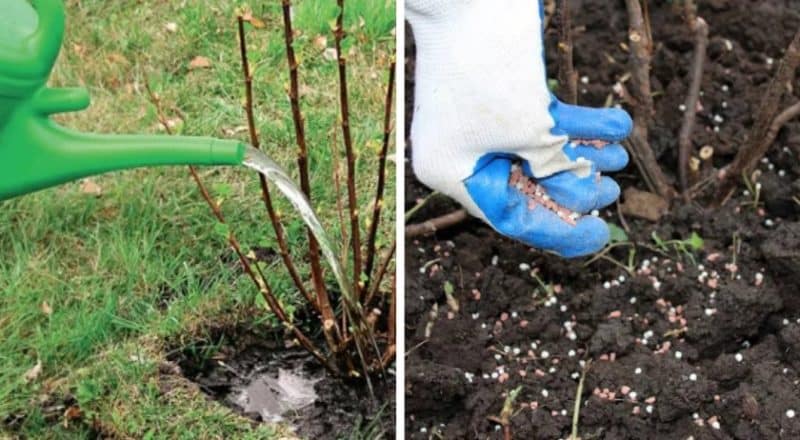
Caring for gooseberries in the spring at the dacha or at home consists of standard procedures: watering, bush formation, weeding, loosening the soil, fertilizing, preventing diseases and pests and preparing for winter.
The gardener’s initial task after planting is to help the plant grow a powerful root system, so the shoots of young gooseberries are pruned. If the roots of the seedling are weak, leave 5-10 cm and 2-3 buds. With strong roots, you can leave 10-15 cm and 3-4 buds. If pruning is not done, the plant will spend energy growing green mass. The roots will not have enough resources, and the bush will grow weakened and develop poorly. Then, every spring, sanitary pruning is carried out - dry, weak and frozen branches are removed.
Water the young gooseberries as the top layer of soil dries. It is important to ensure that it does not become waterlogged or dry out. Use settled and warm water, water it in the morning or evening so that the moisture does not evaporate quickly.
After watering, the soil is loosened so that oxygen reaches the roots. Loosening can damage small roots that are located close to the surface, so near the trunk this is done to a depth of no more than 15 cm. The farther from the trunk, the deeper you can loosen, up to 30-40 cm.
Weeds are regularly pulled out. They deplete the soil and shade the gooseberries, attract pests and create a favorable environment for the development of bacteria and fungi.
Feeding will be needed in 2-3 years. Both organic and complex mineral fertilizers are equally good for gooseberries.
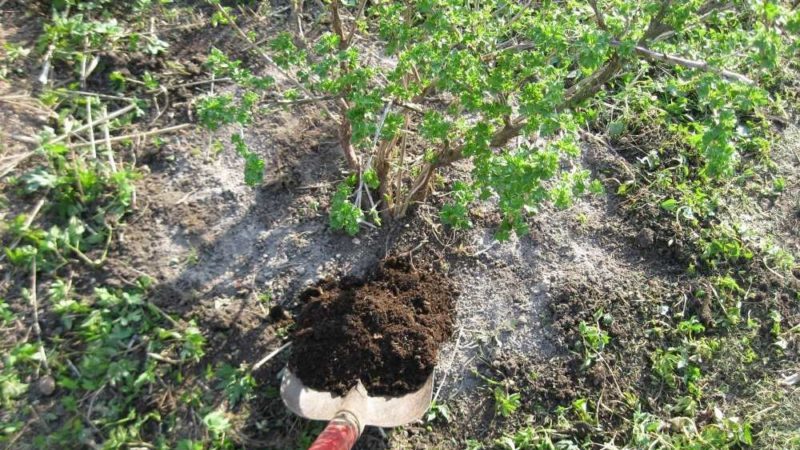
How to plant and grow in the fall
The autumn procedure is not very different from the spring one, but has some nuances.
Optimal timing for autumn planting:
- in Siberia, the Urals, and the Leningrad region - late September or early October;
- in the southern regions of Russia - the first half of October;
- in the Volga region - the second half of October;
- in the middle zone - end of October.
Approximately, planting should be done at least a month before the first frost. The daytime temperature should be +10°C and above, and the night temperature should not be lower than +5°C.
In autumn, it is better to plant stronger and older seedlings, 2 years old, with a well-developed root system (25-30 cm) and several strong shoots (25-30 cm).
The process of preparing planting material and soil, as well as planting, is similar to the spring one. If autumn is dry and warm, monitor the condition of the soil and moisten it regularly, using 5 liters of water per plant. A sufficient amount of water and warmth contribute to the rapid growth of strong and healthy roots, which means successful wintering and further development. If autumn is rainy, watering is not necessary so that the seedlings do not get wet.
Young gooseberries will overwinter well if you mulch the ground with a thick layer (8 cm) and then add more snow. This will protect the plantings even from severe frosts.
Reference. Autumn planting is considered more favorable for gooseberries - the plant takes root better, and in the spring it immediately begins to grow, without wasting time and energy on growing roots. Such bushes begin to bear fruit earlier than those planted in the spring. However, in regions of risky farming, there is a high probability that autumn seedlings will die in winter from severe frost.
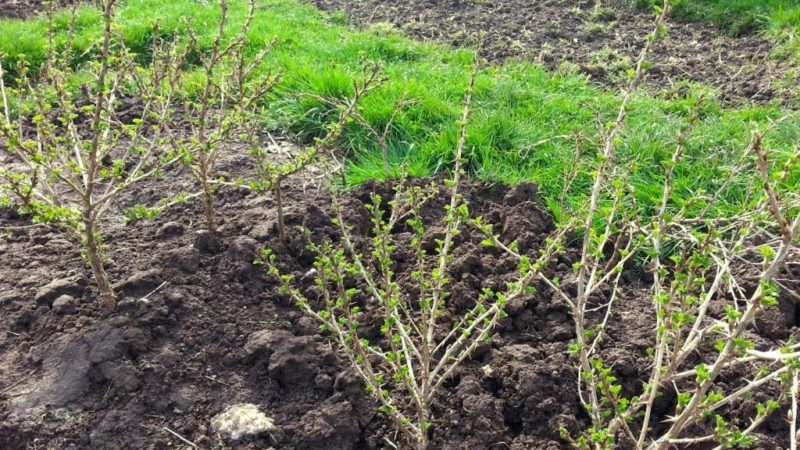
Is it possible to plant in summer?
Summer is not the best time to plant. In hot weather, seedlings do not take root well. Even if you provide them with abundant watering and shading, there is a high probability that they will die. Therefore, planting seedlings with an open root system in the summer is pointless.
Planting material in containers has a better chance of taking root. The roots are protected by a lump of earth and will not be damaged during planting.In essence, the process is a regular transfer, when the plant is pulled out of the container and placed into a planting hole with a lump of earth. Gooseberries will grow successfully in a permanent place, but even in this case, they need abundant regular watering, especially in hot weather, and at first - slight shading. Weeding, loosening the soil and preventing diseases and pests are also included in the complex of cultivation measures.
In summer, gooseberry planting methods such as cuttings and propagation by layering are usually used.
When cutting from a bush, healthy, strong shoots 15-20 cm long are cut off. Each one should have at least 2 buds and 2 leaves above them. The cut is made straight at the top, and at an angle of 45° at the bottom. In a greenhouse or hotbed, the cuttings are stuck into the ground, deepened by 3 cm. The temperature is maintained high, and the soil is kept moist. By autumn the cuttings will take root.
When propagating by layering, the lower shoots are bent, pinned to the ground with metal or wooden hooks and sprinkled with soil. They are also well watered. After some time, young vertical shoots will appear - this means that the layering has taken root. They continue to be cared for during the summer, and in the fall they are separated from the mother plant and planted in a permanent place.
Conclusion
Successful cultivation of gooseberries largely depends on the time of planting. Gardeners often choose autumn planting, but practice shows that this method is often associated with great risks, especially in regions with an unstable and unpredictable climate. Spring planting, although considered less fruitful, often benefits and gives more successful results.If you follow the recommendations, even a novice gardener can plant gooseberries and grow strong, consistently fruit-bearing bushes from young plants.